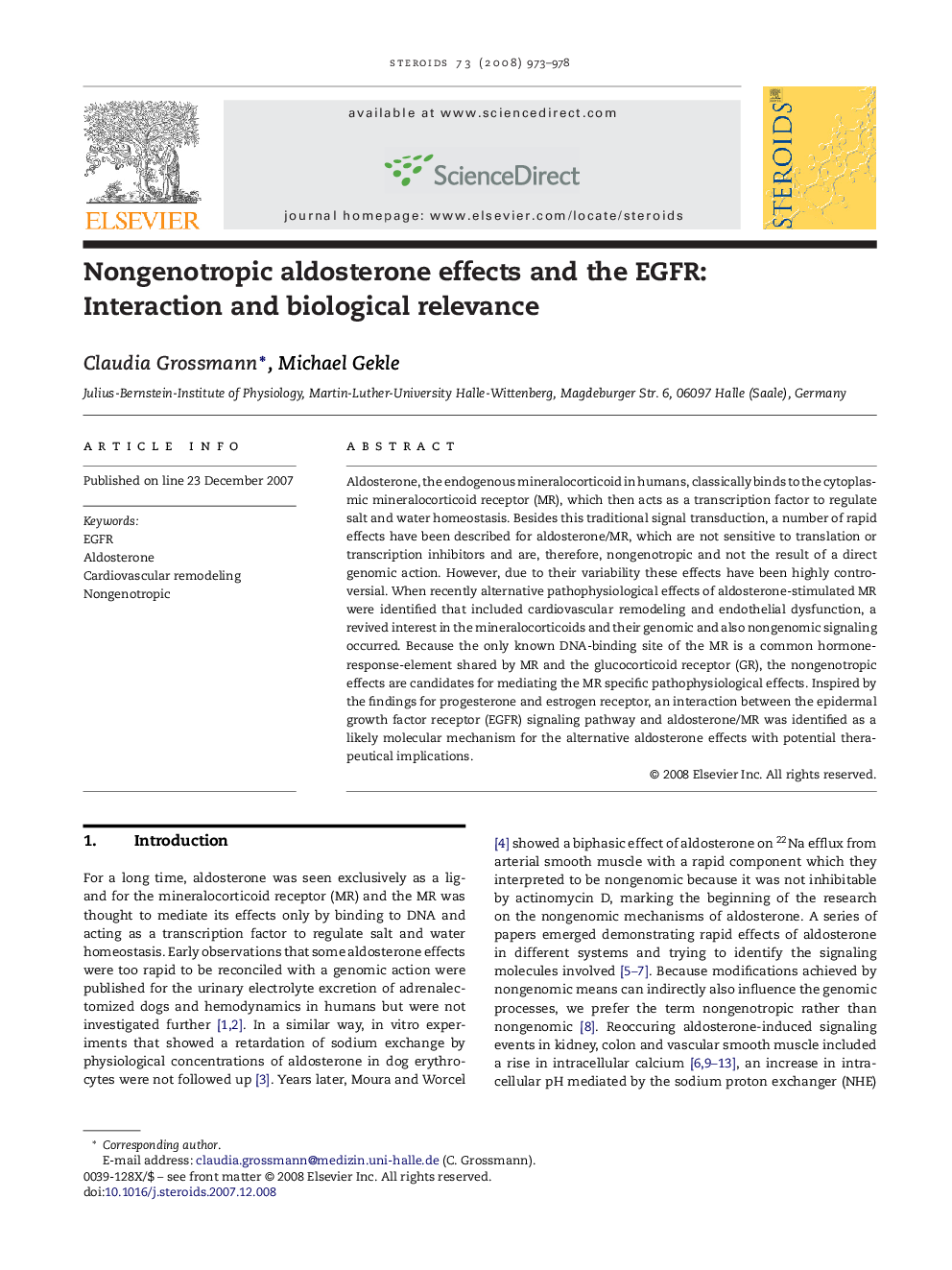| Article ID | Journal | Published Year | Pages | File Type |
|---|---|---|---|---|
| 2029462 | Steroids | 2008 | 6 Pages |
Aldosterone, the endogenous mineralocorticoid in humans, classically binds to the cytoplasmic mineralocorticoid receptor (MR), which then acts as a transcription factor to regulate salt and water homeostasis. Besides this traditional signal transduction, a number of rapid effects have been described for aldosterone/MR, which are not sensitive to translation or transcription inhibitors and are, therefore, nongenotropic and not the result of a direct genomic action. However, due to their variability these effects have been highly controversial. When recently alternative pathophysiological effects of aldosterone-stimulated MR were identified that included cardiovascular remodeling and endothelial dysfunction, a revived interest in the mineralocorticoids and their genomic and also nongenomic signaling occurred. Because the only known DNA-binding site of the MR is a common hormone-response-element shared by MR and the glucocorticoid receptor (GR), the nongenotropic effects are candidates for mediating the MR specific pathophysiological effects. Inspired by the findings for progesterone and estrogen receptor, an interaction between the epidermal growth factor receptor (EGFR) signaling pathway and aldosterone/MR was identified as a likely molecular mechanism for the alternative aldosterone effects with potential therapeutical implications.
